I started the day, as I often do when I need to feel grounded, with a macchiato al banco at Caffè Gerla. There’s something so civilised, so perfectly Italian about standing at the marble counter with your coffee—no rush, no fuss, just a moment to yourself before the day begins. The air under the portici (arcades) was still cool, and the rhythm of footsteps on the old stones under the arcades felt almost like a memory. That particular kind of morning stillness in Turin always reminds me why I love this city.
With no real plan in mind, but a big tote on my arm and my daughter Audrey in tow, we walked to Porta Palazzo. Not to the chaotic front stalls, but the gentler farmer’s market just behind the Antica Tettoia dell’Orologio, where everything feels more down to earth. Audrey was full of suggestions (mostly desserts) and dreams of cakes we must bake. I love when she helps me choose. Even if I have no idea what I’m cooking that day—as was the case this morning, there’s something about the act of choosing that wakes up inspiration.
Summer produce has a different language. The colours shift, more reds, sunset oranges, tender greens, and the textures are more generous, juicier, hungrier. I’m often craving specific things during these hot days, and I sometimes wonder if our cravings are our bodies’ secret way of whispering what we need—minerals, hydration, sweetness, calm. Lately, with all the travel and heat, I’ve felt a kind of tiredness I can’t quite shake. It’s the kind that asks for simplicity and nourishment.
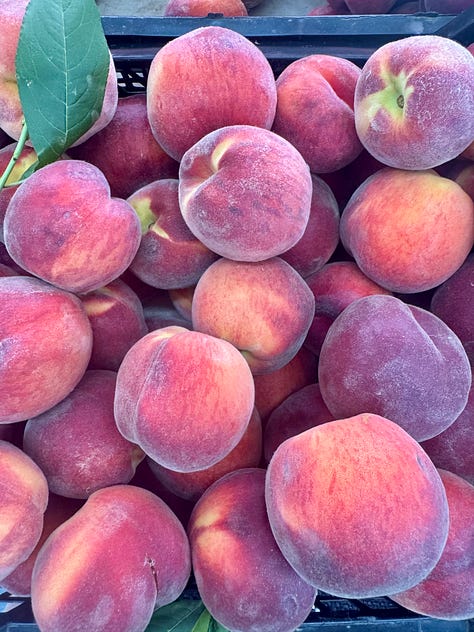

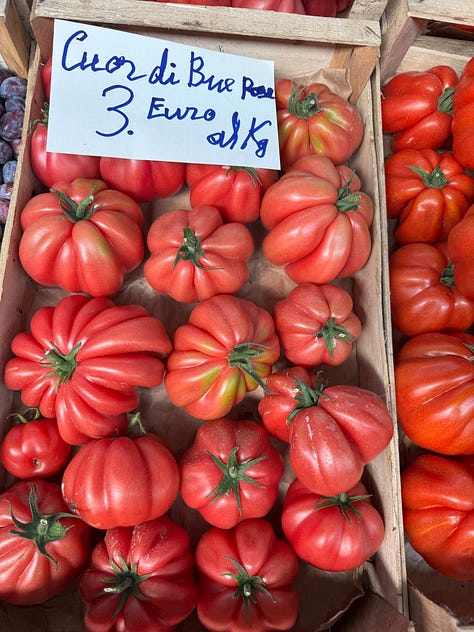
At the herb stall (a favourite of mine), I found what I didn’t know I was looking for: a bouquet of wild herbs bundled together under the label ‘Erbe minestre e frittate’, mint, camomile, fennel fronds and borage. The seller, always warm and eager to share a remedy, told me they’re good for calming inflammation, inside and out. I believed him. I took them home to make a frittata, silky and fragrant, the herbs folding gently into the eggs. It felt like the perfect start to lunch.
But what next?
I stared at all the stalls... still no ideas. Then it came to me: busiate with pesto alla trapanese. Tomatoes, almonds, basil, garlic, olive oil, Sicilian busiate pasta, and a good pecorino cheese. It’s one of those recipes that tastes of sunlight, of southern gardens and open windows. It was exactly what I needed: simple, flavourful, and restorative. And it’s also a recipe I am sharing from my new book ‘A Kitchen in Italy’ published by Clarkson Potter/ Penguin Random House out November 11th. (You can preorder here).
As I was leaving the market, a small bunch of beetroots caught my eye—glossy, with their stems still intact. I remembered a sandwich I used to eat in Stockholm years ago, something earthy and deliciously fresh, with beets, meatballs, crême fraiche, dill, and red onion. I decided to make a salad, or should I say I secretly also wanted to make it as a sandwich filling. Don’t ask me how I managed to squeeze in that thought in the lunch menu, but I did. So I bought 3 ciabattine bread and off we went.
Louise and Audrey helped in the kitchen, peeling, stirring, tasting. We laid the table simply, opened the windows, and let the breeze in. A lunch of mixed flavours, full of colour and life. Sometimes the best meals come out of a morning with no plan—just a walk, a feeling, and a handful of nuts and herbs.
Recipes
A Simple Herb Frittata
You’ll need six eggs. Crack them into a large bowl and whisk gently with a fork or whisk, just until smooth. Season with a generous pinch of sea salt and a few grinds of black pepper.
Now for the herbs. Today it was a bunch of erbe minestre e frittate, a blend of wild herbs often sold by farmers here in Turin. Mine had fresh mint, camomile leaves, wild fennel, and borage. Wash them well, dry them gently, then finely chop a small handful—about ½ cup.
In a medium non-stick pan, heat a good glug of olive oil over medium-low heat.
Pour in the eggs and gently swirl the pan to evenly distribute the mixture. Scatter the chopped herbs all over. You want the frittata to cook slowly and evenly, so it stays tender. Leave it undisturbed for about 6 minutes, then flip over (I use a plate) and cook about 2 minutes on the other side, until golden and fluffy.
Busiate with Trapanese Pesto (from my new upcoming cookbook ‘A Kitchen in Italy’)
Serves 4
1 garlic clove
Fine sea salt and freshly ground
black pepper
½ cup / 60 g blanched almonds,
toasted
1 cup / 30 g fresh basil leaves,
chopped, plus more for garnish
1¾ cups / 250 g datterini or cherry
tomatoes, chopped
¼ cup / 60 ml extra-virgin olive oil
3½ ounces / 100 g Pecorino
Romano cheese, grated, plus more
for serving
1 pound / 500 g dried busiate
1. Using a large mortar and pestle, start crushing the garlic with ½ teaspoon of salt. When the garlic and salt have reached a creamy texture, add the almonds and continue to crush. When creamy, add the basil, tomatoes, and olive oil and continue crushing in a circular motion. Alternatively, using a food processor, puree the garlic, ½ teaspoon of salt, and the almonds until smooth and creamy. Add the basil, tomatoes, and olive oil, and process until creamy. When all the ingredients are smooth, stir in the pecorino and pepper to taste.
2. Bring a large pot of salted water to a boil over high heat. Add the pasta and cook to al dente according to the package directions. Reserving a ladleful of pasta water, drain the pasta.
3. In a large bowl, combine the busiate with the pesto until creamy, stirring in reserved pasta water if it seems dry. 4. Serve garnished with basil and pecorino.
And for the little extra recipe, I couldn’t resist:
Meatballs with beets, dill and crême fraiche (I love it as a sandwich filling!)
Ingredients (serves 4 )
For the meatballs
500 g minced meat (beef)
1 egg
2 tablespoons dry breadcrumbs
Sea salt & freshly ground pepper
Olive oil or butter, for frying
5 small fresh beets (with stems and leaves if possible)
1 small red onion, finely sliced
A very generous handful of fresh dill, chopped
200 g/ 1 cup crème fraîche
A squeeze of lemon juice
Optional: a little vinegar or horseradish for extra tang
Start by making the meatballs. In a mixing bowl, combine the minced meat with the egg, a pinch of salt, and black pepper. Mix gently with your hands until just combined—don’t overwork it. Form into small balls.
Heat a frying pan over medium heat with a little olive oil. Cook the meatballs until golden on the outside and cooked through, turning as needed. Set them aside to cool.
While the meatballs are cooling, prepare the vegetables. Wash and trim the beets, then peel them and chop into small cubes. If the stems and leaves are fresh and tender, include them too: chop the stems finely and slice the leaves into ribbons.
Finely slice the red onion and chop the dill. In a large bowl, mix the beets, onion, beet greens (if using), and dill together.
Add the cooled meatballs to the bowl. Spoon over the crème fraîche, add a squeeze of lemon juice, a pinch of salt, and mix gently to coat everything. Let it sit for a few minutes to allow the flavours to come together.
Serve at room temperature, perhaps with a slice of rye bread or crisp flatbread on the side. Or as a sandwich filling with ciabatta bread.
Until next time!
With love from Turin,
Mimi xx
*Dress is a vintage Prada and ballerinas are Porselli, my favourite ballerinas. xx





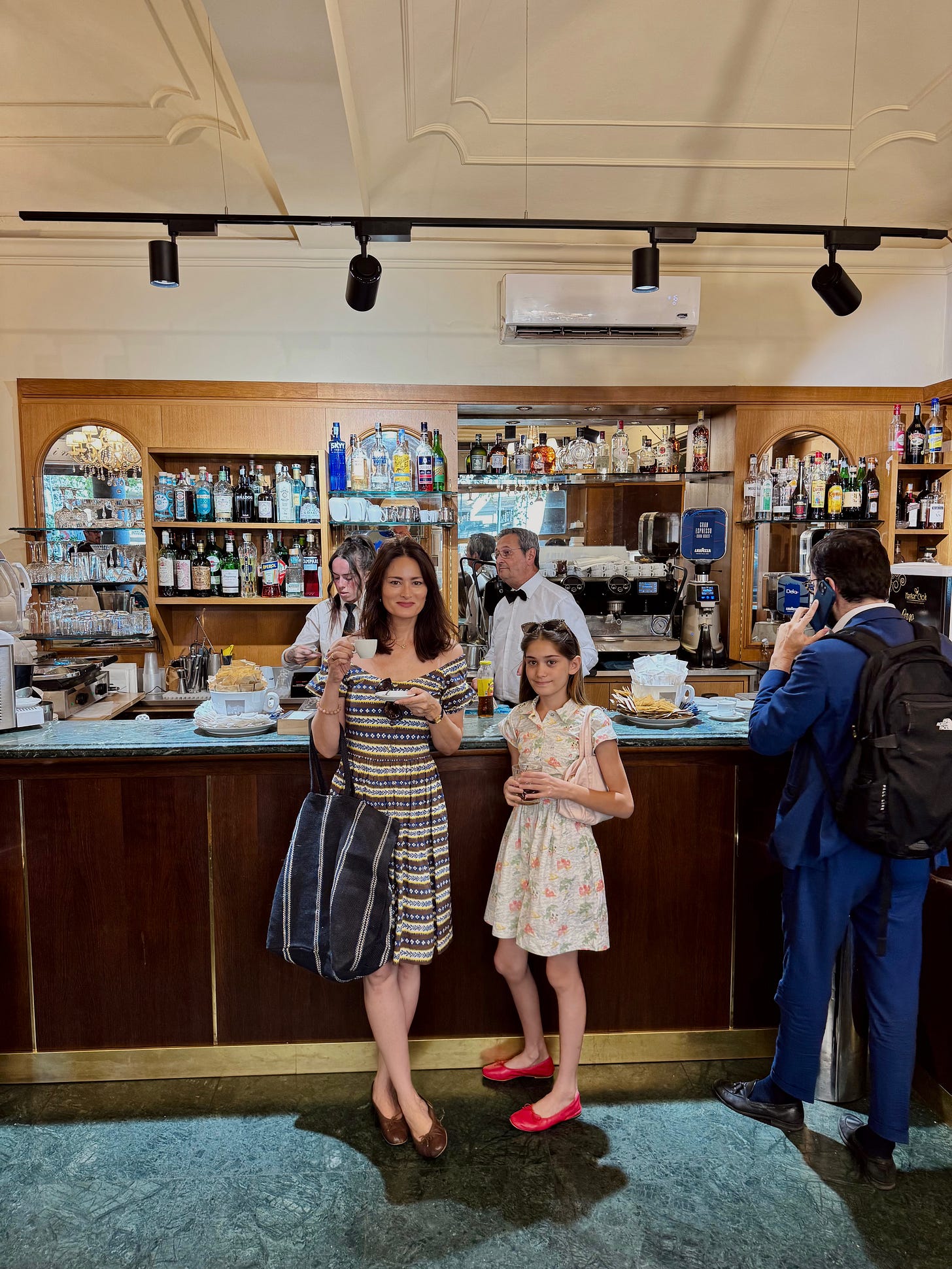


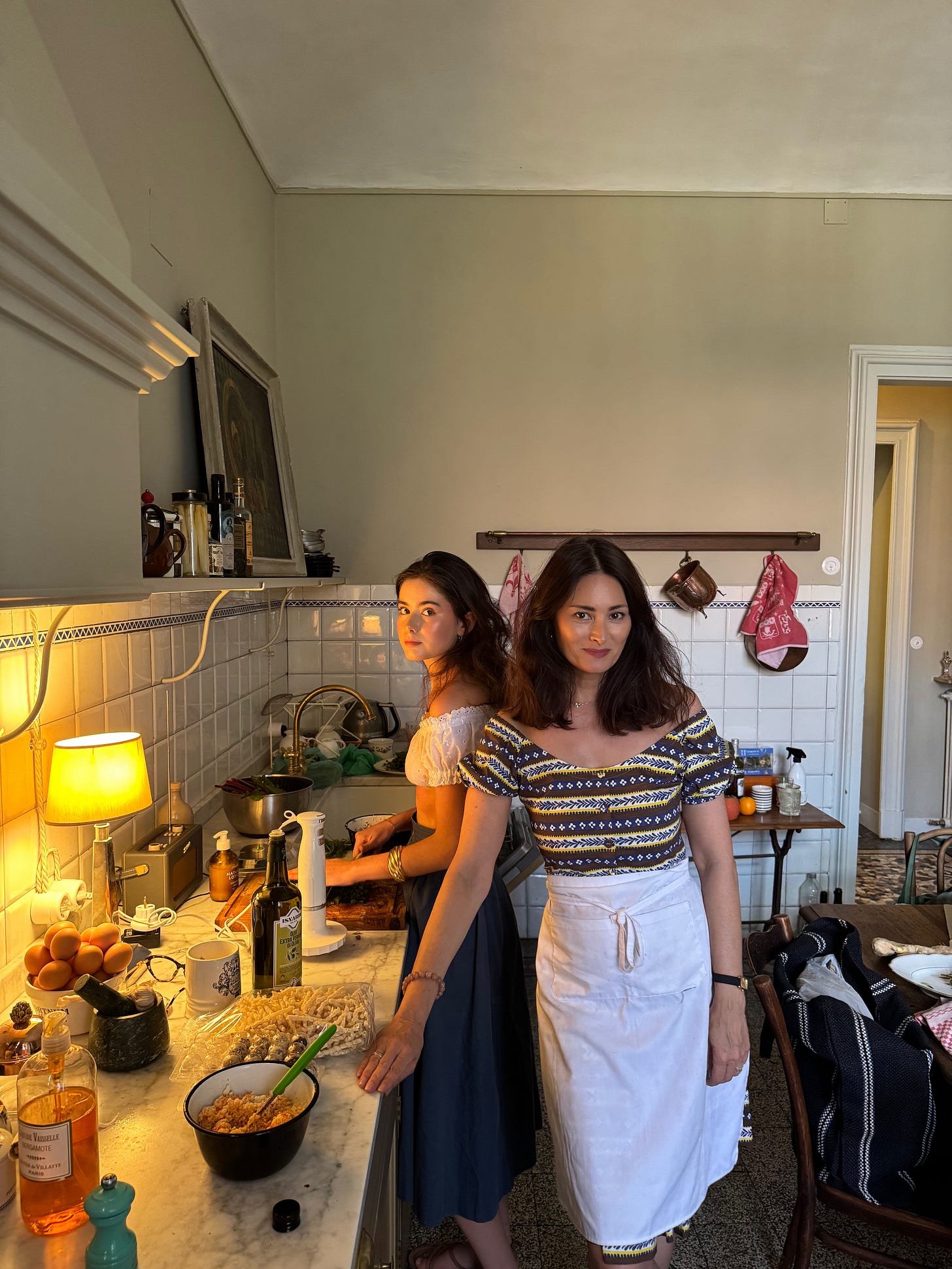
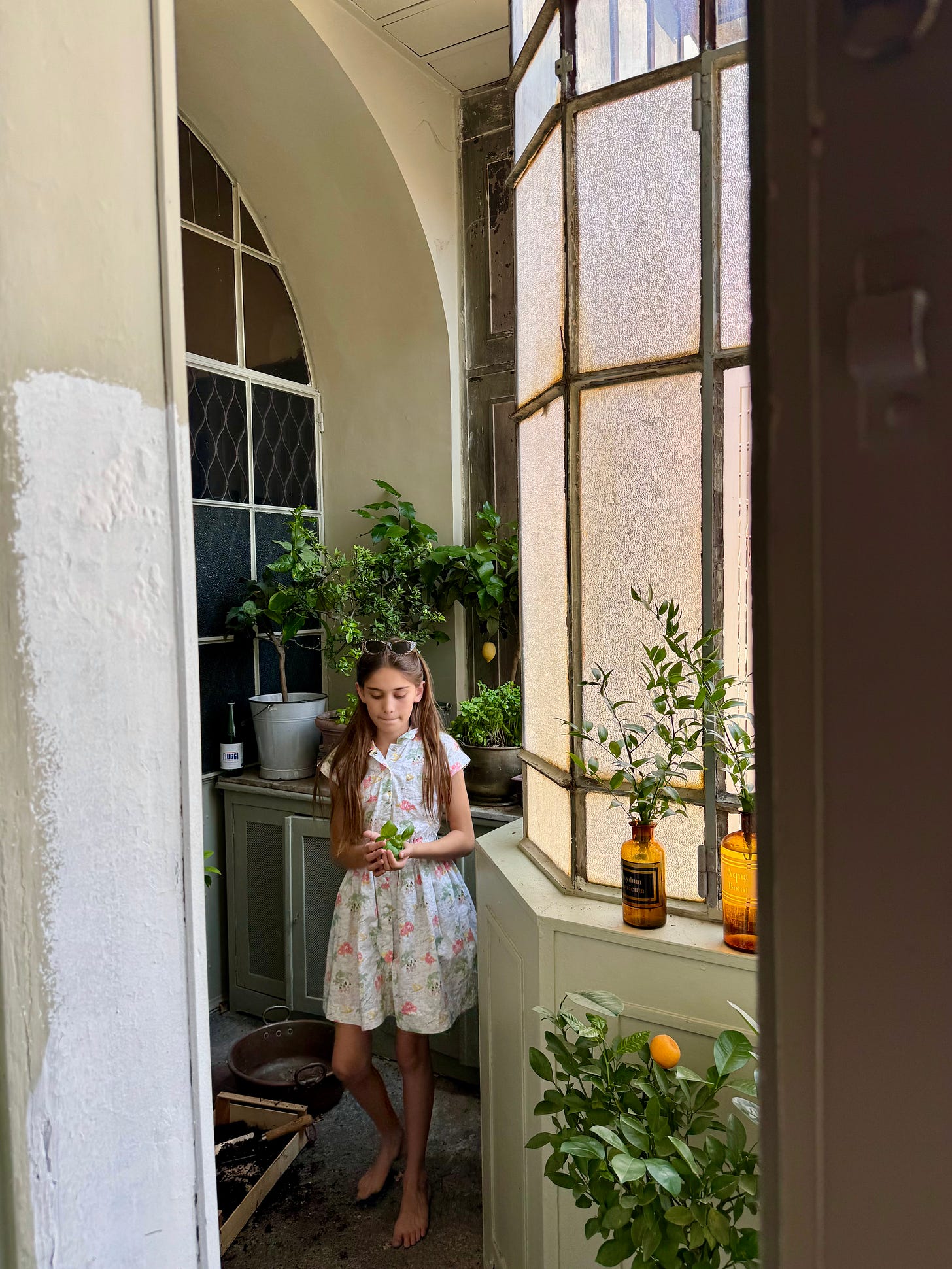
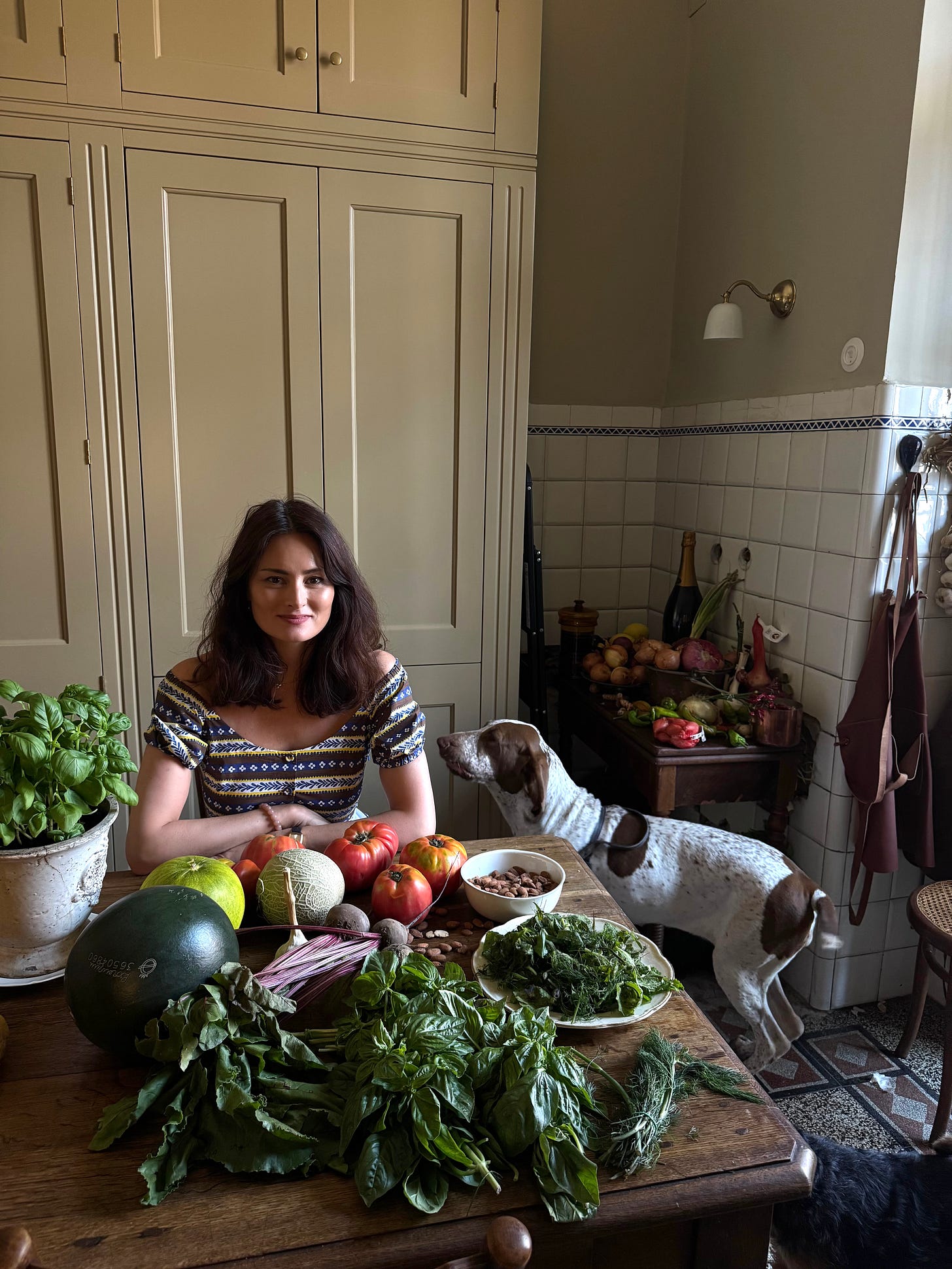
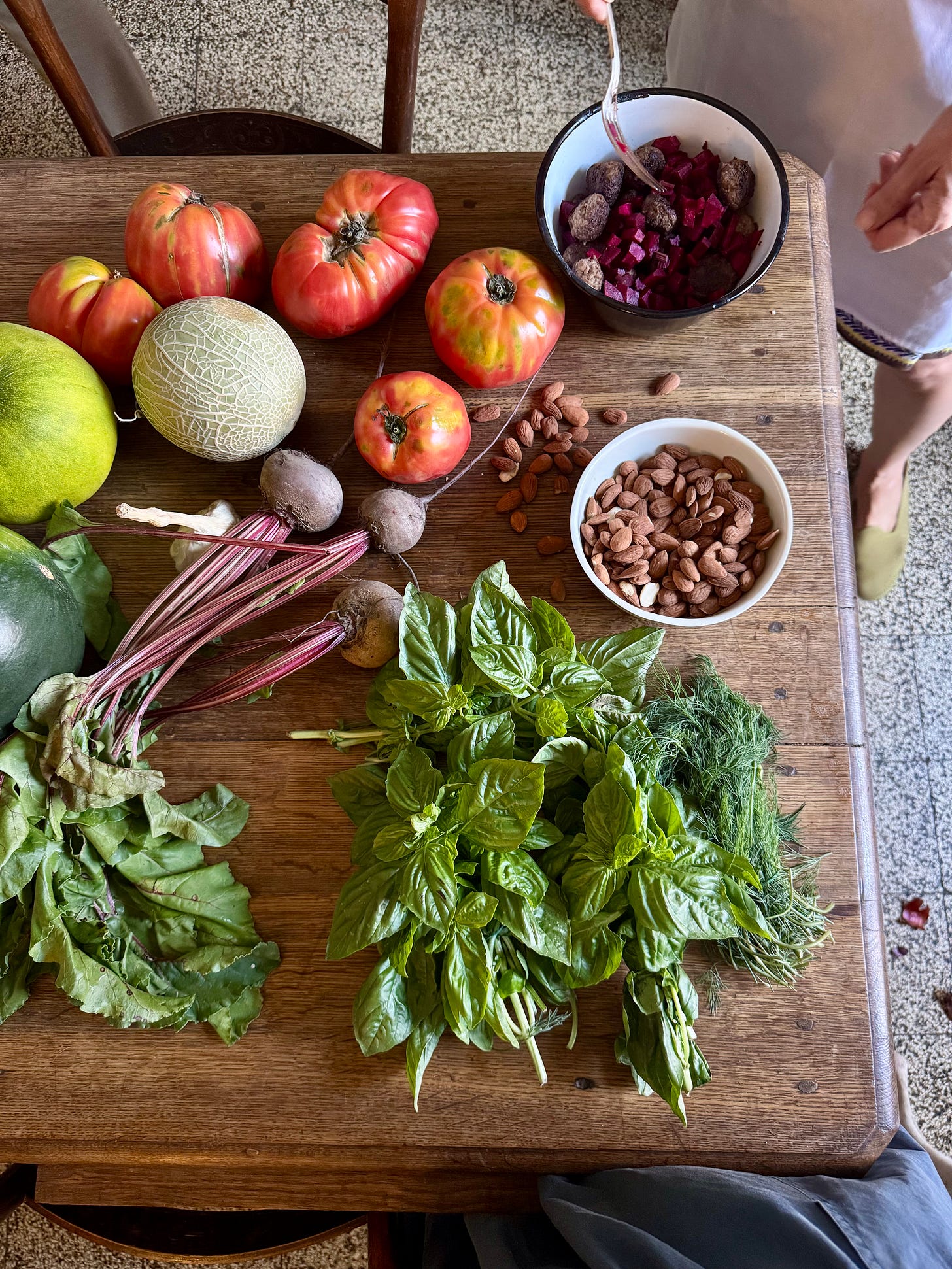


Love that you have a new space to write Mimi and looking forward to more of your posts here! Love the sound of that sandwich! Kisses from Scotland! X
So glad to be reading your posts Mimi. It takes me back to the blogging days. And how much your girls have grown!
That meatball and beetroot sandwich is calling my name. 🧡